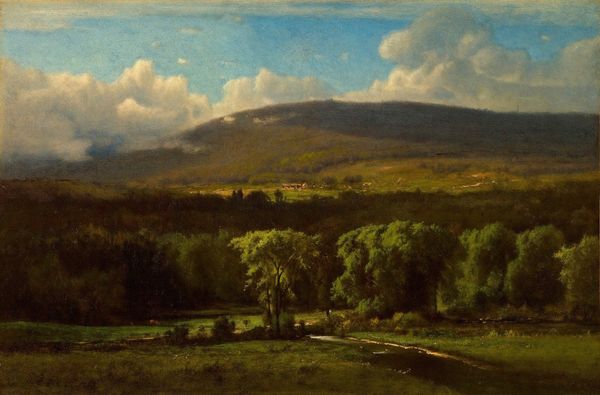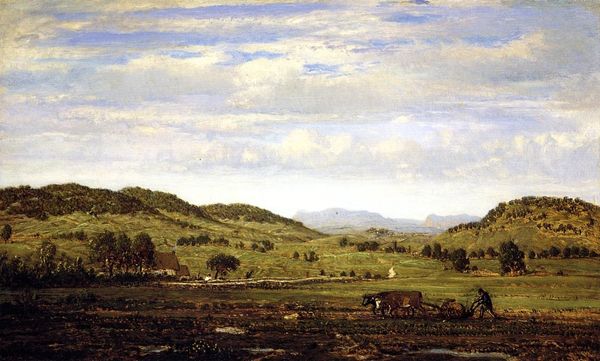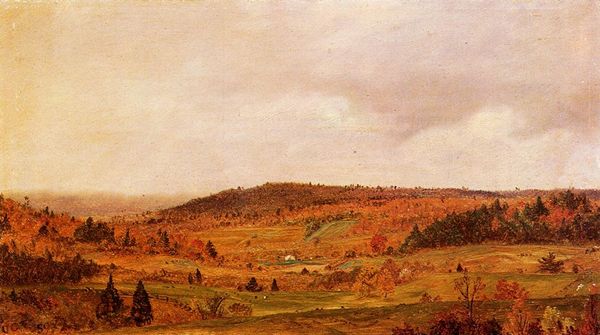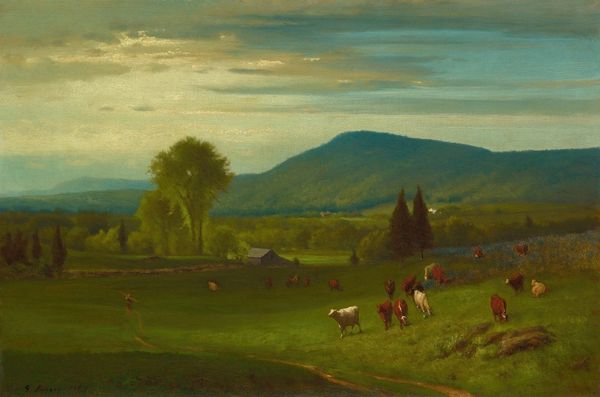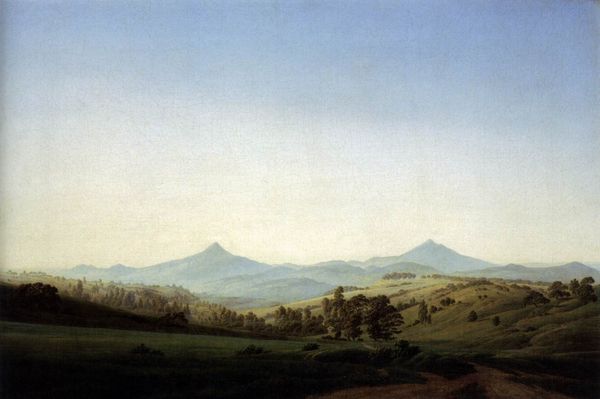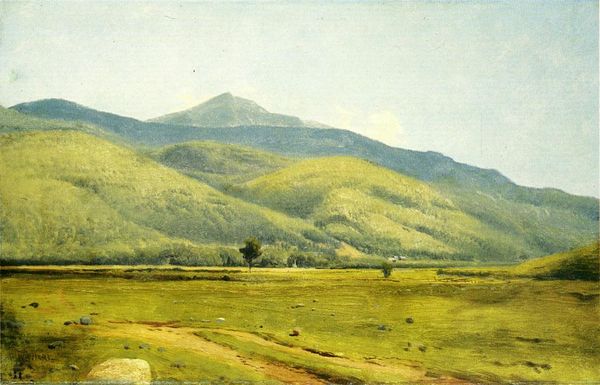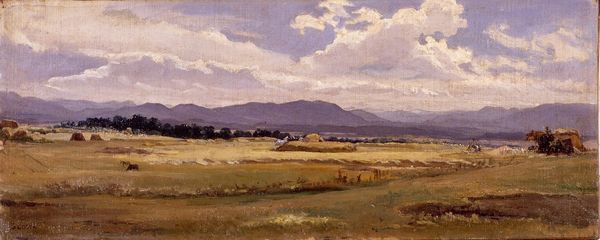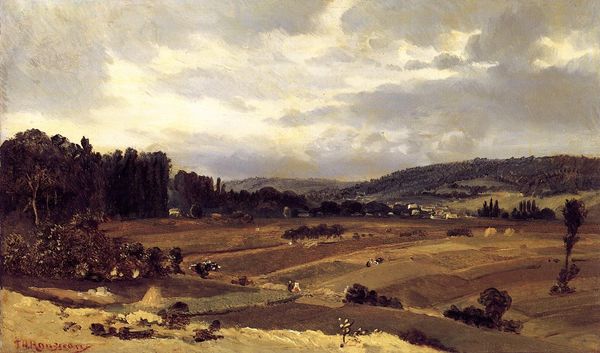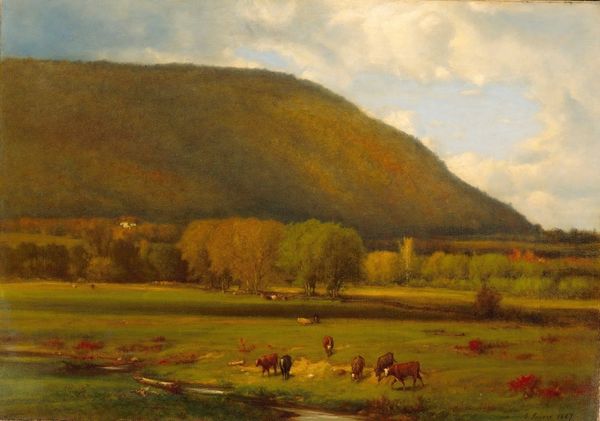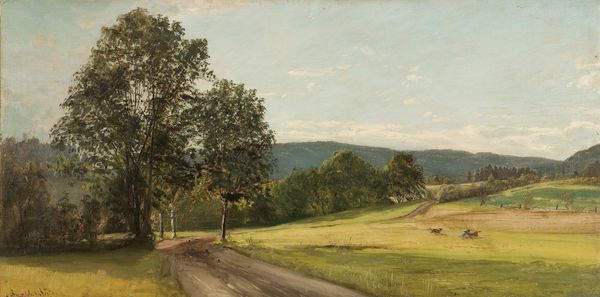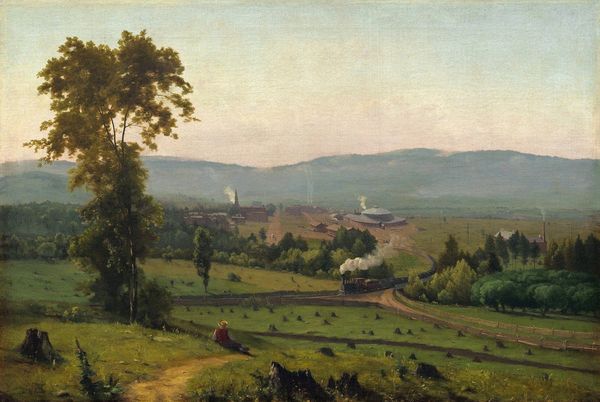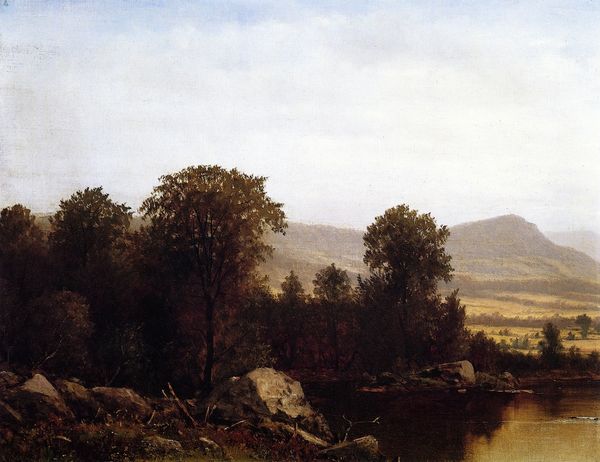
painting, plein-air, oil-paint
#
painting
#
plein-air
#
oil-paint
#
landscape
#
charcoal drawing
#
hudson-river-school
#
realism
Copyright: Public domain
Editor: This is William Hart's oil painting, "View of New Hampshire." There isn’t a specific date listed for the work. When I look at it, I immediately think about harmony and a nostalgic kind of peace. What symbolic meanings do you see in it? Curator: This landscape feels like an invocation, doesn't it? Note how the solitary mountain in the distance dominates the scene, a stable, enduring presence. It reminds me of ancient earthworks or sacred mounds. The Hudson River School artists, of whom Hart was one, weren't just painting pretty pictures. Editor: So the landscape itself is meant to communicate something beyond just… scenery? Curator: Precisely. Think about how the light drapes across the fields, leading our eye toward that central peak. This mirroring invites introspection and respect. Hart may even be hinting at a kind of visual prayer or offering, to some natural ideal of purity and permanence, disrupted by small traces of agricultural use in the fields below. Editor: It's interesting you see it as a prayer. I was more drawn to how realistic it felt, how the colors and forms really gave me the sense of being there in that space. I see beauty, rather than worship. Curator: But isn't beauty, especially the beauty of nature, often a pathway to reverence? This is what many 19th-century viewers believed. Does it make you reflect on continuity between generations, about human relationship with place, and if that plays a role in landscape? Editor: I guess I hadn't considered the role that symbolism plays, I now appreciate seeing landscape painting from a whole new cultural angle. Curator: I hope to find a way to bring more awareness on symbolism in art! It seems so rare nowadays!
Comments
No comments
Be the first to comment and join the conversation on the ultimate creative platform.
